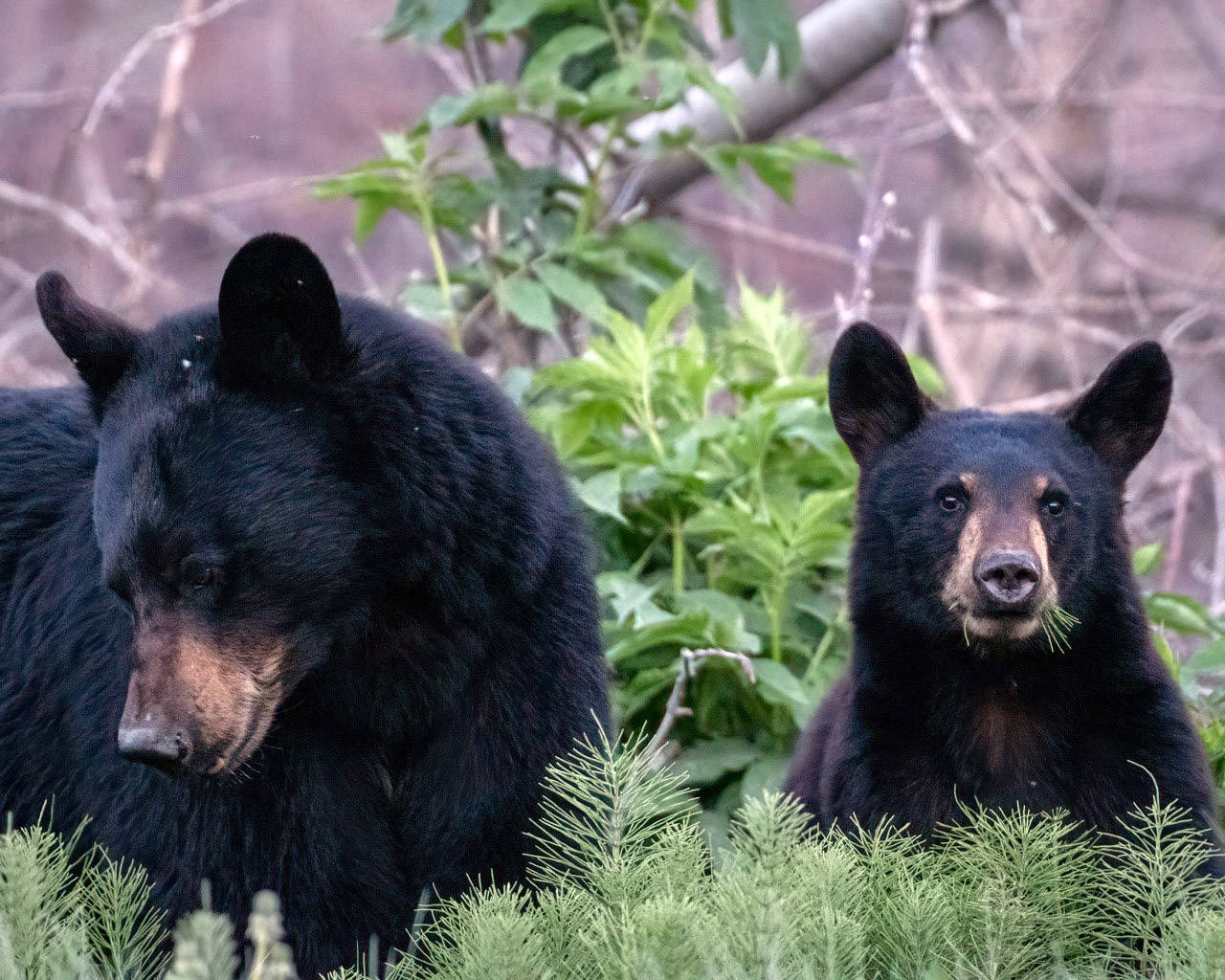Fluffs of shiny black fur, russet red velvety noses, bright yellow mouths open wide.
Spring babies will be making an appearance on the Kenai National Wildlife Refuge this month. Black bears, moose and many bird species call this protected place home. These proud mamas will be caring for their little ones in wetlands, along roads and trails until food is easier to find and wings and legs grow stronger.
So how can we help a mom out, reduce their stress, and set their babies up for success as adults while still viewing these animals in the wild? With respect, patience and trust.
Respect goes a long way. Bears regularly graze on spring dandelions and grass along Skilak Lake Road. If we respect their personal space and stay in vehicles, black bears often continue feeding while your camera clicks.
However, it doesn’t take much to ruin a good thing. Just last week, I spotted an adolescent black bear grazing on plant shoots just off the roadway. Stopping to watch, I was disappointed to see this bear pause, look up and then start walking straight toward my vehicle.
This bear had been fed before. Cars, and people, that are naturally concerning to wild bears had instead become attractive. While no hot dogs or other treats were going to launch from my window, this bear was willing to take the risk to come check, leaving its natural food source behind.
Starting to move on, my vehicle engine noise stopped the bear’s progress, and it quickly gave up begging and returned to the woods. When every visitor respects bears during every visit, never feeding them, and always maintaining space even when that means driving away from a photo opportunity, bears can stay wild and stay out of trouble.
Patience is key. Unlike some landscapes in the Lower 48, where prime habitat is limited and animals congregate in well-known spots, the Kenai is millions of acres of diverse, protected, expansive lands and waters where wildlife are free to roam where they please.
As a result, some wildlife viewing visits end without new sightings. Still, there are ways to improve your spotting success.
First, think like the animal. Bears are searching out green plants until the salmon return. Look deeper into the woods and past the first layer of trees to spot them right now. Watch for brown bears along gravel bars in the Kenai River scavenging last year’s fish carcasses. Keep an eye out for moose in roadside ponds and wetlands.
Second, bring along some binoculars. Last weekend, I spotted four mountain goats grazing high in the Kenai Mountains using binoculars to scan for white spots highlighted against the gray rock.
Third, patiently wait for wildlife to turn up. Feeding animals to encourage them to stay close may get you a photograph, but it sets the next visitor up for unexpected aggression. Unfortunately, it often ends badly for the animal.
Trust an animal’s instincts. Good intentions can spell death for young animals, especially birds, this time of year. Instead of collecting baby birds found hunkered down on the ground, you can be a real wildlife hero by leaving them in their hiding spot.
Celebrate their successful fledging from a distance, leave them where they are, and bring household pets indoors so these youngsters can develop their flying skills in safety. Some mother birds like dark-eyed juncos nest on the ground, in clumps of grass or under bushes, so their babies will always be found there.
Others nest in tree cavities, like chickadees, or in raised nests, like robins, and continue feeding babies away from these nests as soon as the babies can venture out where predators can’t find them easily.
These babies look abandoned, but they are just in-flight training. When these fledglings open their mouths, a telltale yellow color inside acts as a target for mom and clues that they aren’t lost. They are just begging.
Spring babies are here, and while it is a great time to see wildlife from roads and trails, they need our help to start the season off with success. A great way to explore the springtime woods with a guide is at the upcoming National Trails Day on Saturday.
There are still spots available on several guided walks both in Soldotna near Refuge Headquarters and further out in the Skilak Wildlife Recreation Area that day. Call now to preregister (907-260-2820) for these limited space hikes.
Or celebrate Trails Day your own way and take a Signs of Spring walk of your own in your neighborhood. Look for catkins and fresh green leaves on trees, find a snowshoe hare changing from white to brown, listen for bird songs, watch for tracks and scat of animals who also call your neighborhood home, and then share your sightings with us by emailing kenai@fws.gov or messaging our rangers on Facebook (@KenaiNationalWildlifeRefuge).
There’s a great summer season ahead, and we all know it goes way too fast. So, take a moment to take in the subtle signs of the changing season this weekend on the refuge. Happy spring!
Leah Eskelin is Lead Visitor Services Park Ranger at Kenai National Wildlife Refuge. After a first visit to Alaska one springtime back in 2003, she knew she had found home. Share what you love most about life on the Kenai with her and other rangers at www.facebook.com/kenainationalwildliferefuge. Find more Refuge Notebook articles (1999–present) at https://www.fws.gov/refuge/Kenai/community/refuge_notebook.html./
By LEAH ESKELIN
Kenai National Wildlife Refuge

